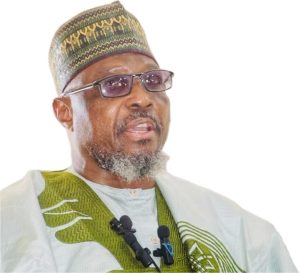Jan. 18, 2024
By Mohamad Moslimani, Christine Tamir, Abby Budiman, Luis Noe-Bustamante And Lauren Mora
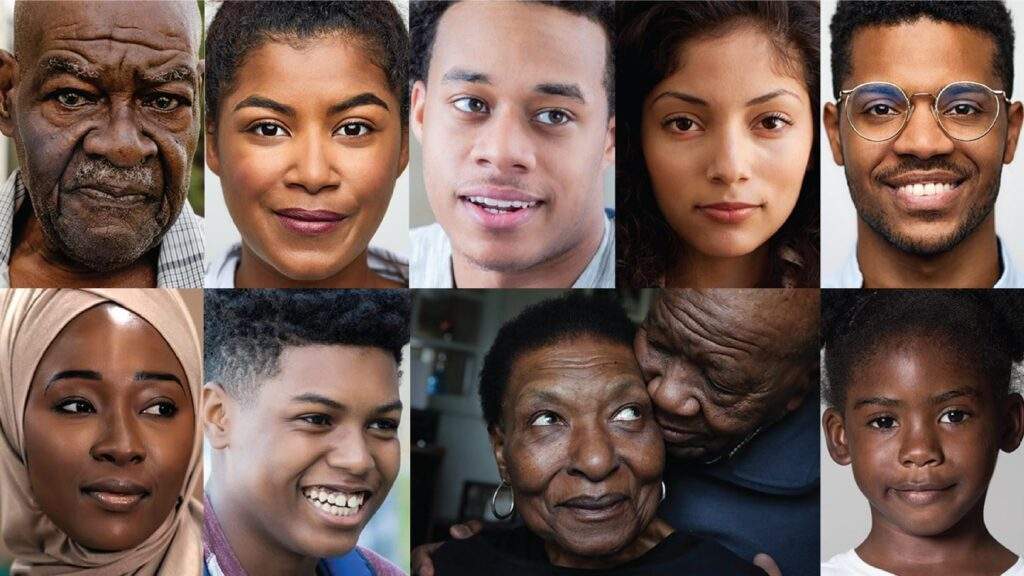
An estimated 47.9 million Americans identified as Black in 2022, an increase of more than 10 million since 2000. An updated fact sheet by the Pew Research Centre explores the demographic, geographic and economic characteristics of this diverse population.
In 2022, the Black population in the United States reached an estimated 47.9 million, constituting 14.4% of the nation’s total inhabitants. This represents a noteworthy 32% surge from the 36.2 million recorded in 2000. The Black community is a tapestry of various racial and ethnic identities, encompassing those who solely identify as Black or in conjunction with other racial backgrounds, as well as Hispanic or Latino individuals who regard themselves as Black.
This fact sheet delves into the demographic, geographical, and economic facets of the U.S. Black population in 2022. It offers insights from the perspectives of four distinct groups: the total U.S. Black population, single-race non-Hispanic Black individuals, multiracial non-Hispanic Black people, and Black Hispanics.
The statistics presented in this profile shed light on the richness and diversity within the Black population. A notable trend is the population’s growth over the years. Rising from 36.2 million in 2000 to 47.9 million in 2022, this demographic surge underscores a 32% upturn over roughly two decades. Moreover, there has been a substantial increase in the number of foreign-born Black Americans, which climbed from 2.4 million in 2000 to 5.1 million in 2022, constituting about 11% of the total U.S. Black population.
The age composition of the U.S. Black population also highlights its youthful nature. In 2022, the median age stood at 32.1 years, nearly six years junior to the overall median U.S. population age of 38.0. Approximately 30% of the entire Black population was under 20 years old, while 12% were 65 or older. As the U.S. Black population continues to evolve and expand, the nuances of its growth and diversity offer a compelling narrative of the nation’s demographic landscape.
This fact sheet serves as a testament to the multiplicity and vibrancy of the Black community, encapsulating its profound impact on the cultural, economic, and social tapestry of the United States.
The Black population of the United States is growing. In 2022, there were an estimated 47.9 million people who self-identified as Black, making up 14.4% of the country’s population. This marks a 32% increase since 2000, when there were 36.2 million Black people living in the U.S.
Black Americans are diverse. This group consists of people with varied racial and ethnic identities and experiences. The nation’s Black population includes those who say their race is Black, either alone or in combination with other racial backgrounds. It also includes Hispanics or Latinos who say their race is Black.
This fact sheet is a profile of the demographic, geographic and economic characteristics of the U.S. Black population in 2022, presented through the lens of four different groups:
- The total U.S. Black population
- Single-race, non-Hispanic Black people
- Multiracial, non-Hispanic Black people
- Black Hispanic people
Population growth
- All Black
- Single race, non-Hispanic
- Multiracial, non-Hispanic
- Black Hispanic
An estimated 47.9 million people in the U.S. identified as Black in 2022. The Black population has grown by more than 10 million since 2000, when 36.2 million of the U.S. population identified as Black, marking a 32% increase over roughly two decades.
In 2022, there were 5.1 million foreign-born Black Americans, about 11% of the U.S. Black population. This is an increase from 2000, when 2.4 million people, or 7%, among the Black population were foreign born.
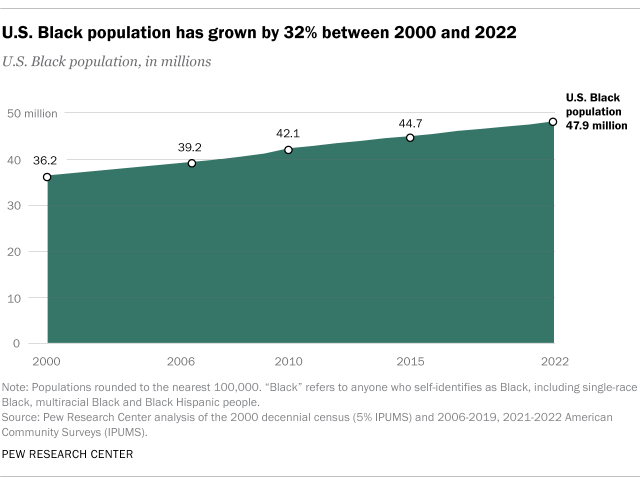
Age structure
- All Black
- Single race, non-Hispanic
- Multiracial, non-Hispanic
- Black Hispanic
The U.S. Black population is young. The median age of Black people in 2022 was 32.1 years, nearly six years younger than the U.S. population’s median age of 38.0. Roughly 30% of the entire Black population was below the age of 20 while 12% were 65 or older.
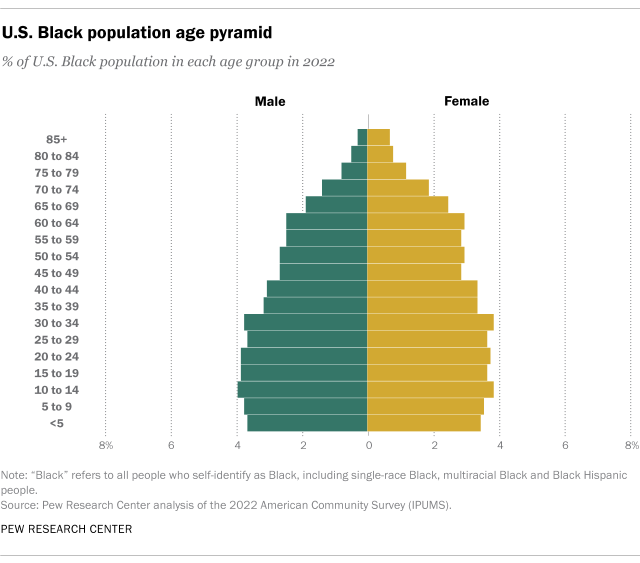
Just under half of the U.S. Black population (45%) was younger than 30 in 2022. A similar share (43%) was between 30 and 64 years old.
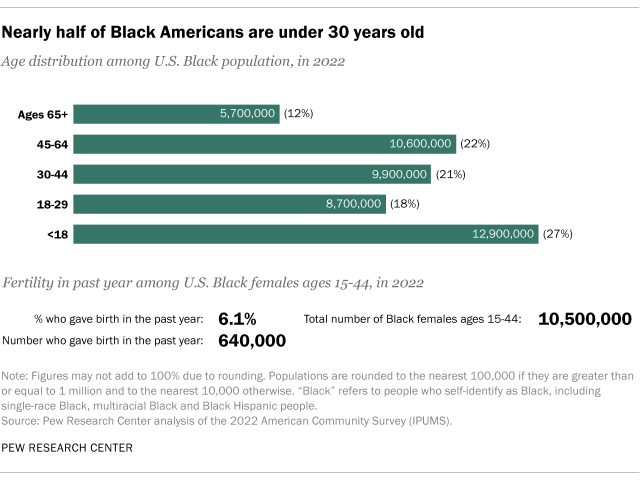
Fertility in the past year
The general fertility rate among Black females ages 15 to 44 was 6.1% in 2022, meaning that 6.1% of females in this age group had a birth in the previous 12 months.
Languages
- All Black
- Single race, non-Hispanic
- Multiracial, non-Hispanic
- Black Hispanic
The vast majority (96%) of the Black population as of 2022 either speaks only English (89%), or they speak another language at home and also say they speak English very well (8%). Besides English, other languages spoken at home by the U.S. Black population ages 5 and older include Spanish (4%), French or Haitian Creole1 (3%) and Amharic and other Ethiopian languages (1%).
Geography
- All Black
- Single race, non-Hispanic
- Multiracial, non-Hispanic
- Black Hispanic
Regionally, the highest concentration of Black people in the U.S. in 2022 is in the South; more than half (56%) live there. Another 17% each live in the Midwest and Northeast, and 10% live in the West.
When it comes to states of residence, Texas is home to the largest Black population, at about 4.2 million. Florida comes in a close second with 3.9 million, and Georgia comes in third, with 3.7 million.
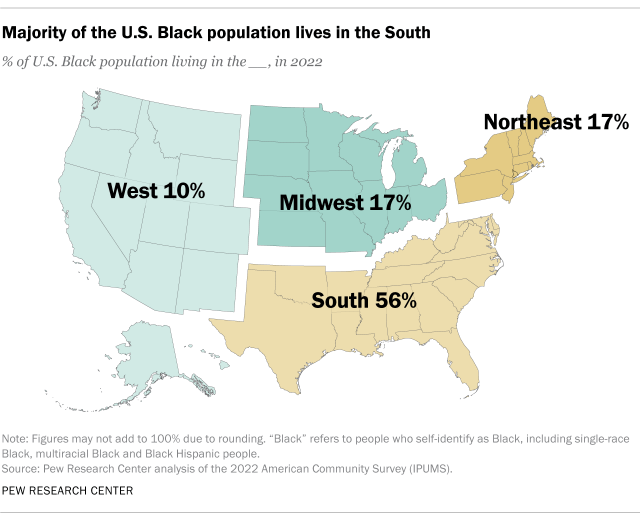
Among metropolitan areas, the New York City metro area – which includes parts of New Jersey and Pennsylvania – has the greatest number of Black residents (3.6 million). In a distant second is the Atlanta metro area, with 2.2 million, and the Chicago metro area is third with 1.7 million Black residents.
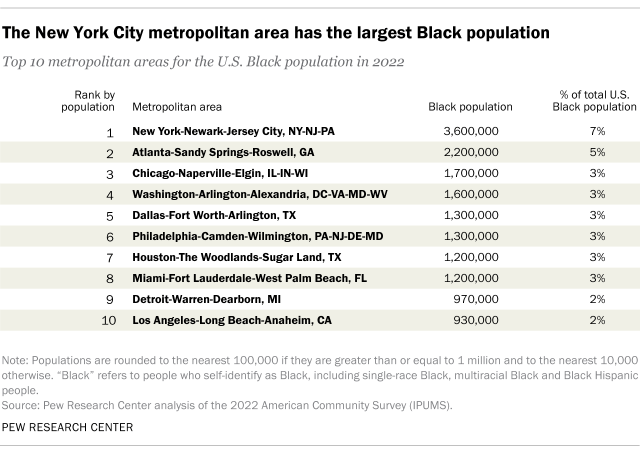
Household income
- All Black
- Single race, non-Hispanic
- Multiracial, non-Hispanic
- Black Hispanic
Among Black U.S. households in 2022, 49% earned less than $50,000, while 51% made $50,000 or more. A third of Black households (34%) earned $75,000 or more, including 22% that made $100,000 or more.
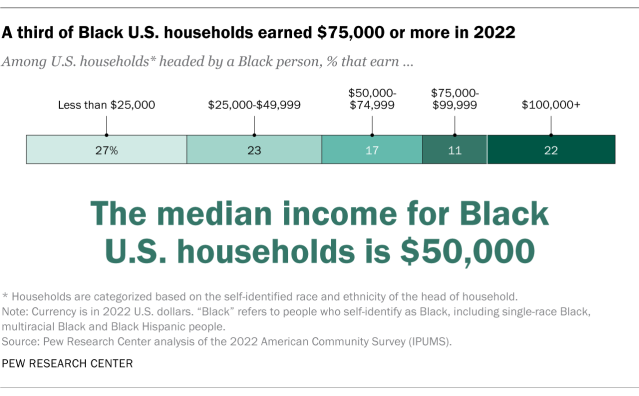
Household type
- All Black
- Single race, non-Hispanic
- Multiracial, non-Hispanic
- Black Hispanic
About four-in-ten Black people in the U.S. (39%) live in households that are headed by married couples as of 2022. Roughly three-in-ten Black people (31%) live in households whose household head is female, and 5% live in male-headed households. Fewer than two-in-ten (16%) are part of non-family households.
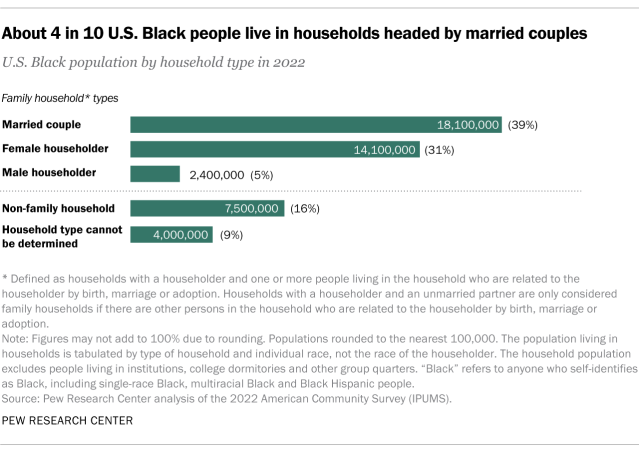
Educational attainment
- All Black
- Single race, non-Hispanic
- Multiracial, non-Hispanic
- Black Hispanic
About a quarter (26%) of all Black U.S. adults ages 25 and older have a bachelor’s degree or more education. As of 2022, another third (32%) have completed some college without obtaining a bachelor’s, and roughly four-in-ten (42%) have, at most, graduated from high school (or earned an equivalent such as a GED certificate).
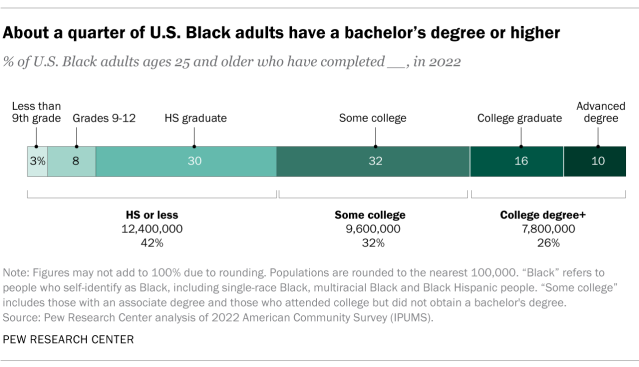
Religious affiliation
- All Black
- Single race, non-Hispanic
- Multiracial, non-Hispanic
- Black Hispanic
Two-thirds (66%) of all Black adults identify as Protestant. Roughly one-in-five (21%) are religiously unaffiliated, while smaller shares of adults identify as Catholic (6%), or with other Christian denominations (3%) or non-Christian faiths (3%).
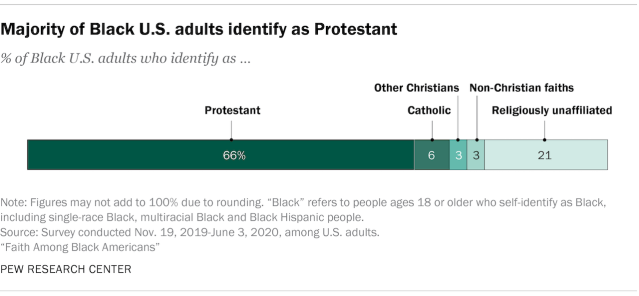
– Pew Research Center








